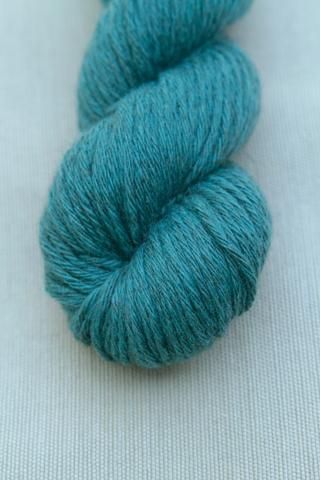The Goal: Find the softest cashmere yarn. Expert knitters guided us away from yarns made of short hairs that pill quickly and toward longer fibers in plush, prewashed skeins.
The Verdict: Rebecca Kevelson started her knitting career a decade ago as a shop clerk at String, an Upper East Side boutique owned by Linda Morse, the woman who, with Luxury Knitting, literally wrote the book on fancy yarn. When her mentor sold the shop, Kevelson went on to write for Vogue Knitting, and she soon noticed a gap in the market for quality soft yarns. In August, she opened Clinton Hill Cashmere Company, offering threads measuring 15.5 microns, well below the usual cashmere count of 19 microns, making her fibers thinner and therefore silkier than just about everything else. Her cashmere gets sheared in northern China and Mongolia before it’s processed, washed, and spun in a high-end Italian mill. Kevelson doesn’t hawk the kaleidoscopic array of colored yarn found at your typical Jo-Ann craft shop — she sticks to six simple solid hues for the no-nonsense holiday-scarf knitters.
Jade Sapphire, one of the best-known cashmere yarn brands, has been hand-dying cashmere yarns in Upstate New York for the past 15 years or so. For knitters who love Jade, it’s all about the variety of colors, of which there are over 20, in shades ranging from hot-pink to an almost-tie-dyed-looking green called “sea glass.” Her eight-ply cashmere is super soft and most popular.
Jade also offers a cashmere called Oooh!, which is basically a really, really fluffy pouf of cashmere that feels like a cloud. The only thing is that the yarn is so thick, you need a lot of poufs to make a sweater.
Linda Morse, the woman who wrote Luxury Knitting, sold her Upper East Side yarn store to a man named Stacy Charles. He now makes his own brand of well-regarded cashmere that’s grown in Mongolia and processed in Italy.
June Cashmere is worth noting for the story alone. In 2007, Sy Belohlavek was working at a mill in Columbus, Ohio, when he was connected with some artists from Kyrgyzstan. They let him and his partner know of the potential for high-quality cashmere in their home country. A few years later Sy moved his family to Kyrgyzstan and they’ve been living there, making super-soft cashmere on small farms around the region, ever since.
*A version of this article appears in the November 13, 2017, issue of New York Magazine.










